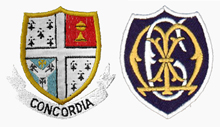Mayfield College
 |
|
| Motto |
Concordia (Latin for Harmony) |
|---|---|
| Established | 1868 |
| Closed | 1999 |
| Type | Independent boarding and day |
| Religion | Roman Catholic (Xaverian) |
| Location |
Mayfield East Sussex TN20 6PW England Coordinates: 51°02′28″N 0°16′06″E / 51.041126°N 0.268266°E |
| Gender |
1868-1992 (Boys) 1992-1999 (Coeducational) |
| Ages | 11–18 |
| Colours |
Navy/Light Blue/Yellow |
| Former pupils | Old Magaveldians |
| School Magazine | Magavelda |
| Affiliated school | Foxhunt Manor |
1868-1992 (Boys)
Mayfield College is a defunct Roman Catholic boys' boarding school founded as the Holy Trinity Orphanage For Boys in 1865-6 by the American born Dowager Duchess of Leeds, Louisa Catherine Caton, one mile from Mayfield, East Sussex. The main building and attached chapel were built in the Gothic style, primarily of red brick and are Grade II listed, having been designed by E. W. Pugin. After closure in 1999 both the main building and chapel were converted into luxury apartments now called collectively Mayfield Grange. Officially opening in 1868 it was also known as the Xaverian Brothers School, St Xavier's College and Xaverian College at various times. Mayfield College was built as one of a pair of orphanages at the Duchess's expense, the other originally known as St. Michael's Orphanage for Girls in Bletchingley (Mark Cross), East Sussex, also designed by Pugin.
From 1936-59 Mayfield College had an associated preparatory boarding school known as the School of St. Edward the Confessor at Foxhunt Manor in Waldron, East Sussex where the religious order of Xaverian Brothers also taught boys from 8–12 years of age. On closing the prep school became a convent known as Monastery of the Visitation.
Located on Little Trodgers Lane, on a 400 ft. hill midway between the valley of the River Rother and the village of Mark Cross, ground was broken for the original orphanage in 1864. It cost £20,000 to build and took four years to complete. Many of the Canterbury red clay bricks were dug from the 109 acre plot at sites which later became a rifle range to the south-east and a pond to the south. They were fired in situ and transported 200 yards to the building area. Most of the external masonry was made from local sandstone also quarried nearby.
...
Wikipedia
